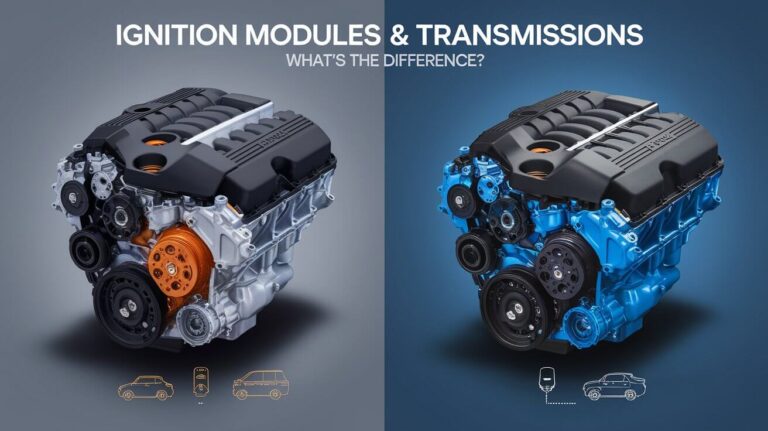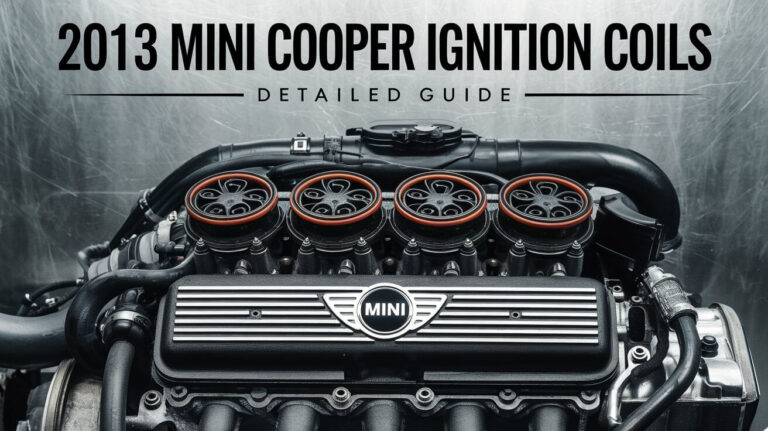How Should Ignition Timing Look on BM3? Full Tuning Guide

When it comes to tuning your BMW with the BM3 (Bootmod3) platform, one of the most critical aspects to optimize is ignition timing. Proper ignition timing can significantly improve performance, fuel efficiency, and overall driving experience. Whether you’re tuning for daily driving, performance racing, or handling multiple fuel types like E85 or premium gasoline, understanding how to adjust ignition timing on BM3 is key to unlocking your car’s potential.
What Is Ignition Timing?
Basics of Ignition Timing
Ignition timing refers to the exact moment when the spark plug ignites the air-fuel mixture in the engine’s combustion chamber. This process is precisely synchronized with the movement of the pistons to ensure optimal combustion. If the spark occurs too early or too late, it can lead to a loss of power, decreased fuel efficiency, or even engine damage.
In a well-tuned engine, ignition timing is adjusted to achieve maximum power output without causing detonation (knock), which is when the air-fuel mixture ignites prematurely and can lead to engine damage.
How Ignition Timing Affects Engine Performance
Timing has a direct impact on engine power and efficiency. If the spark happens too early (advanced timing), it can cause knocking and increased engine temperatures. On the other hand, if the spark is too late (retarded timing), the engine may feel sluggish, and you might notice poor fuel economy. The goal is to find the sweet spot where the timing provides the best balance of power, efficiency, and safety.
BM3 Tuning Platform and Its Capabilities
Overview of Bootmod3 (BM3)
Bootmod3, commonly referred to as BM3, is a cloud-based tuning solution that allows BMW owners to make performance modifications to their vehicle’s engine control unit (ECU). With BM3, you can adjust multiple parameters, including boost levels, air-fuel ratios, and, most importantly, ignition timing. The platform offers pre-configured tunes as well as full customization for more experienced tuners.
BM3 is popular because it offers real-time map switching, datalogging, and the ability to flash tunes from your mobile device or computer, making it easy for users to adjust their settings without needing to visit a tuning shop. It supports various BMW engines, including the N55, B58, and S55, among others.
Ignition Timing Control in BM3
One of the most powerful features of BM3 is the ability to control ignition timing directly through the software. You can modify timing maps based on RPM, engine load, and fuel type. Advanced users can create custom timing maps for different fuel blends (like E85 or high-octane gasoline) and even adjust timing dynamically based on sensor data, such as knock and ethanol content.
Factors Affecting Ignition Timing for BM3
Fuel Type (Octane Rating)
Fuel type plays a significant role in determining the correct ignition timing. Higher-octane fuels, like 93-octane or ethanol blends, allow for more aggressive timing because they are less prone to knocking. Lower-octane fuels, like 87 or 91-octane, require more conservative timing to avoid detonation.
- Higher Octane Fuels: These allow you to advance the timing further, leading to more power without the risk of knock.
- Lower Octane Fuels: Timing must be retarded slightly to prevent detonation, reducing overall performance but keeping the engine safe.
Engine Load and RPM
The engine’s load and RPM are crucial factors in determining ignition timing. At low loads and RPMs, the engine needs less advance, but as the RPM increases, the spark needs to occur earlier to ensure full combustion of the air-fuel mixture. Advanced timing at high RPMs can lead to significant power gains, but it must be balanced carefully to avoid knocking.
BM3 allows users to set ignition timing targets based on load and RPM, enabling more precise control over how the engine performs in different conditions.
Recommended Ignition Timing Settings for BM3 Users
Stock Timing vs. Tuned Timing
Stock ignition timing is designed to work with a wide variety of driving conditions and fuel qualities, which means it’s often conservative to ensure reliability. In contrast, tuned ignition timing, especially with BM3, is adjusted to extract more performance from the engine by optimizing the spark advance.
In BM3, the stock timing settings can be left unchanged, or they can be modified for different purposes:
- Map Slot 1: Typically reserved for stock or slightly altered timing targets.
- Map Slot 2: Users often set this up for more aggressive timing, particularly when running higher octane or ethanol blends.
Advanced Timing for Performance
To achieve the best performance, many BM3 users adjust the timing to be more aggressive, especially when using higher-octane fuel. For example, advancing the timing by a few degrees at higher loads and RPMs can lead to significant horsepower gains, as long as the fuel being used can handle the increased stress without causing knock.
A common strategy is to use vertical interpolation within the BM3 platform to smooth timing adjustments across different RPM and load ranges. This prevents sudden timing changes that could lead to knocking or inconsistent performance.
Timing for Different Fuels (Pump Gas vs. Flex-Fuel)
For users running flex-fuel setups, BM3 allows for dynamic timing adjustments based on ethanol content. By utilizing a flex-fuel sensor, the BM3 platform can automatically adjust timing maps to account for different ethanol concentrations. This is especially useful for users who frequently switch between pump gas (93 octane) and ethanol blends (E85).
For example, a BM3 tune might have one ignition timing map for pump gas, and a more aggressive map for ethanol blends. When the sensor detects a higher ethanol content, BM3 will automatically switch to the ethanol timing map, allowing for more advanced timing due to the higher knock resistance of ethanol.
How to Adjust Ignition Timing Using BM3
Step-by-Step Guide
Adjusting ignition timing using BM3 is relatively straightforward, but it requires some understanding of how the engine responds to changes. Here’s how you can adjust ignition timing in BM3:
- Log In to Your BM3 Account: Use the mobile app or website to access your vehicle’s tuning settings.
- Navigate to the Ignition Timing Map: Once inside the tuning editor, locate the ignition timing map. You’ll see a table that displays timing values for different RPM and load ranges.
- Make Adjustments: You can either manually adjust the timing values for each RPM/load cell or use the vertical interpolation function to smooth the changes across the table. For example, you might increase timing by 1-2 degrees at higher RPMs for improved performance.
- Datalog Your Changes: After making adjustments, it’s crucial to monitor the engine’s performance using BM3’s datalogging feature. Keep an eye on parameters like knock, AFR (air-fuel ratio), and cylinder temperatures to ensure your adjustments are safe.
- Save and Flash: Once you’re satisfied with the changes, save the map and flash it to your vehicle’s ECU.
Logging and Monitoring Changes
Datalogging is an essential part of tuning ignition timing. BM3 allows you to monitor real-time engine data to ensure that your timing adjustments aren’t causing knock or other issues. Key parameters to watch include:
- Knock Retard: If the engine detects knock, it will automatically retard the timing to prevent damage. Excessive knock retard indicates that your timing is too aggressive.
- AFR (Air-Fuel Ratio): A lean air-fuel mixture combined with aggressive timing can lead to detonation. Ensure that your AFR is within a safe range for the type of fuel you’re using.
- Cylinder Temperatures: High cylinder temperatures can indicate that your timing is too advanced, leading to engine stress.
Tuning for Safe Ignition Timing
Recognizing Dangerous Signs of Incorrect Timing
Improper ignition timing can lead to severe engine problems, including knocking, overheating, and even catastrophic failure. Here’s what to watch for:
- Knocking or Ping Sounds: A clear sign of over-advanced timing, which can lead to engine damage.
- Overheating: If your engine runs too hot, it could indicate that the timing is too advanced for the fuel you’re using.
- Sluggish Performance: Retarded timing may lead to a noticeable decrease in power, as the engine isn’t able to fully burn the air-fuel mixture.
Optimal Timing Based on Modifications
Ignition timing adjustments should also take into account any hardware modifications you’ve made to your car. For example:
- Larger Turbochargers: A bigger turbo can produce more boost, which requires more conservative timing to prevent detonation.
- Cold Air Intakes: With better airflow, you can often run slightly more advanced timing without risking knock.
- Upgraded Exhaust Systems: Improved exhaust flow can allow for more aggressive timing, particularly at higher RPMs.
Common Issues with BM3 Ignition Timing Adjustments
Over-Advanced Timing
Advancing the timing too much can lead to detonation, which is harmful to the engine. Symptoms include knocking, misfires, and excessive heat. If you experience any of these issues, it’s important to pull back the timing slightly and retune the engine.
Too Conservative Timing
While it’s safer to run conservative timing, it can also rob your engine of power. If you’ve adjusted the timing too far in the retarded direction, you’ll likely notice that your car feels sluggish and unresponsive, especially at higher RPMs. Fine-tuning is key to striking the perfect balance between safety and performance.
Benefits of Optimizing Ignition Timing on BM3
Increased Power Output
One of the main reasons to adjust ignition timing is to increase horsepower. With more advanced timing,the engine can generate more power because the air-fuel mixture is ignited at a more optimal time. This results in more efficient combustion and better use of the engine’s power potential. By adjusting the timing with BM3, especially for performance applications, you can see significant gains in horsepower, particularly at higher RPMs and under load.
Improved Fuel Efficiency
Another benefit of optimizing ignition timing is improved fuel efficiency. By ensuring the air-fuel mixture is ignited at the right moment, the engine can extract more energy from the fuel, reducing the amount needed for the same level of performance. This is particularly noticeable when cruising at lower RPMs or under light load conditions. Users of BM3 often report better miles-per-gallon (MPG) after fine-tuning their ignition timing.
Conclusion
Ignition timing is a critical factor in tuning your BMW, especially when using a powerful platform like BM3. By understanding how to adjust timing based on fuel type, engine load, and modifications, you can unlock significant performance gains while maintaining engine safety. Whether you’re running on pump gas or an ethanol blend, BM3 allows you to fine-tune your vehicle’s ignition timing to match your specific needs. Always remember to monitor your engine’s performance through datalogging and adjust conservatively to avoid potential issues like knocking or overheating. With proper timing adjustments, you can enjoy increased horsepower, better fuel efficiency, and a more responsive driving experience.



